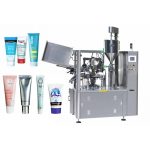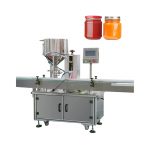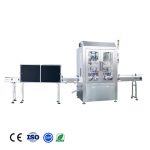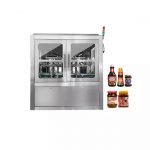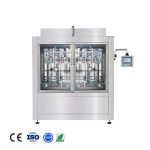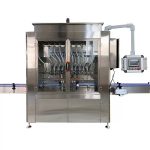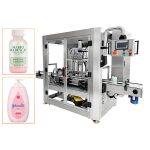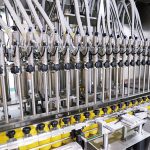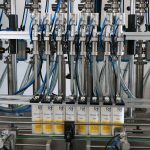A dropper bottle filling machine is a type of automated equipment used in the pharmaceutical, cosmetic, and personal care industries to accurately and efficiently fill dropper bottles with liquid products. These machines are designed to handle a variety of bottle sizes and shapes, as well as different types of liquids, including thin liquids, thick liquids, and those with particulates.
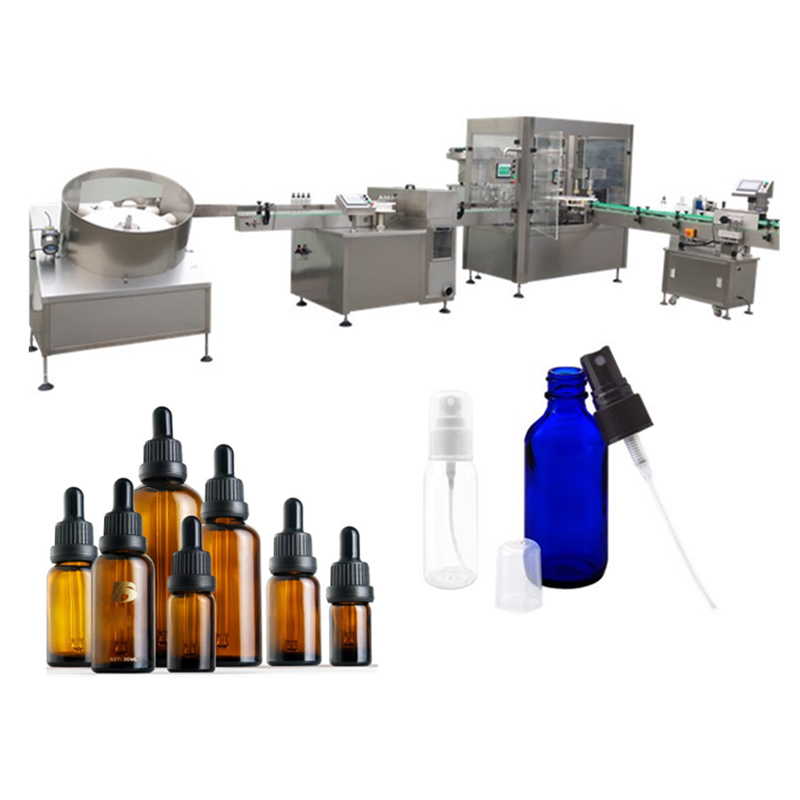
There are several different types of dropper bottle filling machines available on the market, each with its own unique features and capabilities. Some common types of dropper bottle filling machines include:
- Piston filling machines: These machines use a piston to dispense the liquid product into the bottle. The piston is typically driven by an air cylinder, which allows for precise control over the filling volume. Piston filling machines are suitable for a wide range of liquids, including those with particulates, and can be used to fill bottles of different sizes and shapes.
- Peristaltic filling machines: These machines use a rotating peristaltic pump to fill the bottles. The pump is made up of a flexible hose that is squeezed by rollers, which forces the liquid product through the hose and into the bottle. Peristaltic filling machines are ideal for thin liquids and are often used in the pharmaceutical and cosmetic industries.
- Volumetric filling machines: These machines use a fixed volume chamber to dispense the liquid product into the bottles. The chamber is typically filled with the liquid product, and then a specific volume is dispensed into each bottle as it passes through the filling machine. Volumetric filling machines are suitable for a wide range of liquids and are often used in the food and beverage industries.
- Gravity filling machines: These machines use the force of gravity to fill the bottles with the liquid product. The bottles are positioned upside down, and the liquid product is dispensed into the bottles using a valve or nozzle. Gravity filling machines are suitable for thin liquids and are often used in the food and beverage industries.
In addition to these basic types of dropper bottle filling machines, there are also a number of additional features and options that can be added to these machines to improve their performance and functionality. Some common options include:
- Nozzle options: Different nozzle configurations can be used to fill bottles with different types of liquids. For example, a straight nozzle may be used for thin liquids, while a funnel-shaped nozzle may be used for thicker liquids.
- Filling accuracy: Most dropper bottle filling machines are designed to be highly accurate, with a filling tolerance of less than 1% for many machines. This ensures that the bottles are consistently filled to the same volume, which is important for quality control and product consistency.
- Speed and throughput: Depending on the size of the machine and the speed at which it operates, dropper bottle filling machines can fill anywhere from a few hundred to several thousand bottles per hour.
- Bottle handling: Some dropper bottle filling machines are designed to handle bottles of different shapes and sizes, while others are designed to handle only a specific bottle size or shape.
- Cleaning and maintenance: Many dropper bottle filling machines are designed to be easy to clean and maintain, with removable parts and easy access to the internal components. This is important to ensure the machine stays in good working order and to prevent contamination of the product.
To use a dropper bottle filling machine, the operator will typically follow these steps:
- Set up the machine: This involves selecting the appropriate filling nozzles and setting the filling volume for the bottles. The operator will also need to ensure that the machine is properly calibrated and that all of the internal components are in good working order.
- Load the bottles: The operator will typically load the bottles onto the filling machine by hand or using a bottle feeding mechanism. The bottles should be placed in the designated filling location on the machine, which may be a conveyor belt, a rotary table, or some other type of bottle handling system.
- Fill the bottles: Once the bottles are in place, the filling machine will begin filling them with the liquid product. The exact process will vary depending on the type of filling machine being used. For example, a piston filling machine will use a piston to dispense the product, while a peristaltic filling machine will use a rotating pump to fill the bottles.
- Seal the bottles: After the bottles have been filled, the filling machine may be equipped with a capping mechanism to apply a cap or closure to the bottles. This is important to prevent contamination and leakage of the product.
- Label the bottles: Many dropper bottle filling machines are also equipped with a labeling system to apply labels to the bottles. This may involve printing labels and applying them to the bottles, or it may involve applying pre-printed labels.
- Package the bottles: Once the bottles have been filled, capped, and labeled, they are typically packaged for distribution or storage. This may involve placing the bottles in boxes or packaging them in some other way.
There are a few key considerations to keep in mind when choosing a dropper bottle filling machine:
- Product type: Different filling machines are better suited for different types of products. For example, a piston filling machine may be a good choice for thick liquids, while a peristaltic filling machine may be better for thin liquids.
- Bottle size and shape: Make sure to choose a filling machine that is capable of handling the size and shape of the bottles you will be using.
- Filling accuracy: It is important to choose a filling machine that is accurate and consistent in its filling volumes, as this is critical for quality control and product consistency.
- Speed and throughput: Consider how many bottles you need to fill per hour and choose a filling machine that is capable of meeting your needs in terms of speed and throughput.
- Maintenance and cleaning: Make sure to choose a filling machine that is easy to clean and maintain, as this will help to ensure the machine stays in good working order and helps to prevent contamination of the product.
Overall, a dropper bottle filling machine can be a valuable asset for any business that needs to fill dropper bottles with liquid products. By automating the filling process, these machines can help to improve efficiency, reduce the risk of errors, and ensure consistent and accurate filling of the bottles.

